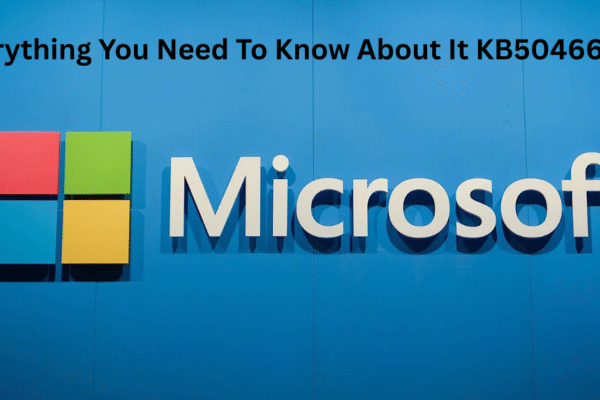

Exploring the Digital Underground: A Deep Dive into views-source:https://roobx4uuu.blogspot.com
In the fast-moving world of internet subcultures, hidden blogs and underground URLs play a powerful role in shaping niche communities. One such example that has recently captured attention is views-source:https://roobx4uuu.blogspot.com. While this URL may appear cryptic to the average internet user, to digital enthusiasts, cybersecurity researchers, and alternative media seekers, it represents a portal into a corner of the web that’s rich with unfiltered information, raw creativity, and digital experimentation.
In this article, we’ll explore what makes views-source:https://roobx4uuu.blogspot.com intriguing, how to interpret such source-view URLs, the significance of viewing source code in blogs, and why these kinds of pages are gaining popularity in today’s internet culture.
What Does “views-source:” Mean?
To begin with, “view-source:” is not a traditional part of a URL. It’s a browser command that allows you to view the source code of a webpage. For example, if you type view-source:views-source:https://roobx4uuu.blogspot.com into your browser’s address bar, it will display the raw HTML and script used to build that webpage.
So, when we look at views-source:https://roobx4uuu.blogspot.com, we are essentially being directed to inspect the code structure of a specific Blogger page hosted on the “roobx4uuu” subdomain. This can provide valuable insight into how the page was created, what scripts or trackers are running, and even reveal hidden data embedded in the page.
Decoding the Blog: What Is roobx4uuu.blogspot.com?
The blog located at https://roobx4uuu.blogspot.com appears to be part of a larger trend in anonymous blogging and digital minimalism. These types of blogs often avoid visual overload and instead focus on delivering raw information—sometimes in the form of text dumps, developer logs, or uncategorized archives.
What sets views-source:https://roobx4uuu.blogspot.com apart is not just the content, but the delivery. By encouraging users to view the source code, the creator is inviting a more technical audience—one that understands how websites are constructed and is willing to read between the digital lines.
Why Would Someone Ask You to View the Source?
There are several reasons why the owner of a blog might want readers to view the source:
- Hidden Messages or Easter Eggs: Developers and bloggers sometimes hide messages or ASCII art within the HTML or CSS of their pages. These are invisible on the normal browser view but show up in the source.
- Code-Based Art or Activism: In some underground communities, source code itself is used as a medium of expression. By formatting the HTML in creative ways, creators can turn the source into a form of “code poetry.”
- Privacy and Censorship Circumvention: Certain sensitive or controversial topics may be encoded or obfuscated in the source to prevent automated systems from detecting them. This technique is often used in whistleblower blogs or by activists in restrictive regimes.
- Technical Showcases: Developers sometimes use the source view to showcase unique scripting methods or minimalist web design that doesn’t rely on templates or content management systems.
Understanding the Audience of views-source:https://roobx4uuu.blogspot.com
The target audience for such a blog is not everyday readers. Instead, it speaks to:
- Programmers and Developers
- Hacktivists and Cyber Researchers
- Internet Historians
- Open Source Enthusiasts
- Digital Artists
- Tech Minimalists
These are users who are comfortable reading HTML, JavaScript, and CSS, and who derive meaning not just from text, but from the structure of the text. The appeal is in the rawness—the untouched, unfiltered view of data before it gets prettified for the average user.
The Rise of Minimal and Cryptic Blogging
Traditional blogs have become increasingly commercialized, filled with popups, ads, trackers, and social integrations. In contrast, blogs like views-source:https://roobx4uuu.blogspot.com represent a rebellion against that trend. They are deliberately minimalistic, text-heavy, and avoid mainstream distribution tactics.
In doing so, they create a sense of exclusivity. You have to know how to access the information. You have to understand how to read a page’s source code. This fosters a kind of underground loyalty among readers and builds a micro-community around the blog.
Security and Ethics: Should You Be Concerned?
Whenever you access unconventional web resources, especially ones that involve inspecting source code, you should exercise basic caution. Here are a few things to keep in mind:
- Avoid Clicking on Obfuscated Scripts: These could be malicious if they link to external scripts or attempt to execute harmful code.
- Use Sandbox Browsers: If you’re exploring underground or experimental blogs, consider using a browser in incognito or sandbox mode.
- Look but Don’t Modify: Viewing the source is safe. Attempting to tamper with it locally or externally may cross ethical or legal boundaries.
That said, viewing the source code of a public blog—like **views-source:https://roobx4uuu.blogspot.com**—is not illegal. It’s simply a different way of experiencing the content that’s already publicly accessible.
The Educational Value of Viewing Source
From an educational standpoint, looking at the source code of sites like this one can be an incredible learning experience. You get to see:
- How the Document Object Model (DOM) is structured
- How stylesheets affect the layout
- How data is formatted and retrieved
- Whether the blog uses any external APIs or embeds
This is especially beneficial for students of web development, digital art, or even digital forensics. Analyzing sites in this way improves coding skills and fosters an understanding of how the web functions at its core.
Final Thoughts: More Than Just a Blog
At first glance, views-source:https://roobx4uuu.blogspot.com might seem like a strange digital breadcrumb with no clear destination. But for those willing to dig deeper, it offers a fascinating glimpse into an evolving internet culture—one that values privacy, minimalism, and technical mastery over visual polish or monetization.
In a time when much of the web is governed by algorithms, ad impressions, and engagement metrics, this blog and others like it are quietly forging a path back to the roots of the internet. They remind us that the web was once a playground for curious minds, not just a marketplace or social feed.
If you’re someone who enjoys peeling back the layers of the internet, learning by dissecting, or simply appreciating the elegance of clean code, then take a moment to explore views-source:https://roobx4uuu.blogspot.com. You might just rediscover the thrill of discovery that the early web once promised.
Also Read: Epotnet














